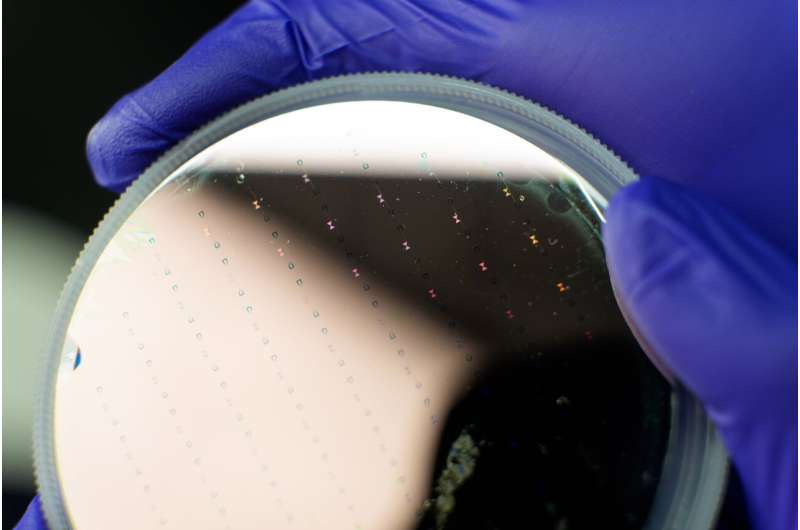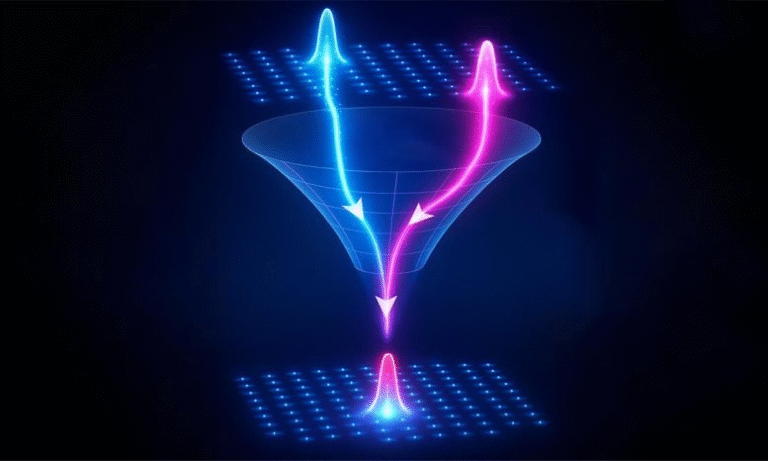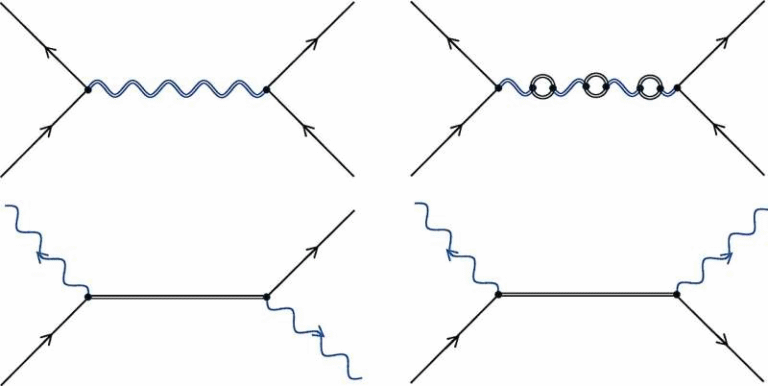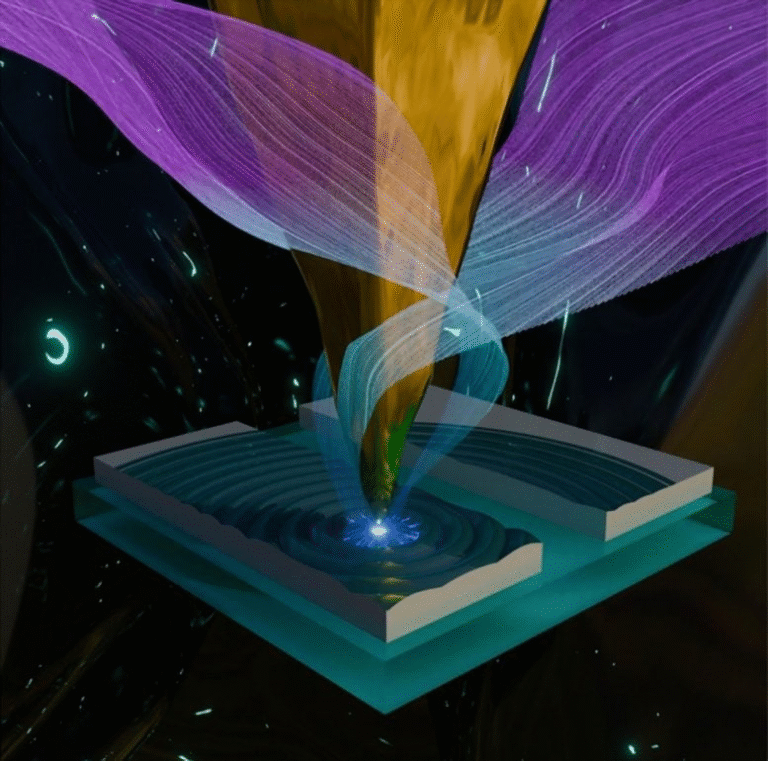UChicago Researchers Push Quantum Computer Connectivity to Distances Once Thought Impossible

A new breakthrough from the University of Chicago’s Pritzker School of Molecular Engineering has opened the door to connecting quantum computers over incredibly long distances—up to 2,000 kilometers in theory, and even 4,000 kilometers under ideal conditions. This marks one of the most significant leaps yet toward building a truly global quantum internet, a concept that scientists have been pursuing for years but have struggled to advance due to the fragile nature of quantum information.
At the center of this development is the research group led by Assistant Professor Tian Zhong, whose team found a way to dramatically extend the quantum coherence time of erbium atoms. Quantum coherence is the property that allows quantum states to remain stable long enough to be used for communication, processing, or storage. Previously, maintaining coherence long enough to send entangled information across even a few kilometers of optical fiber was a challenge. Now, this limitation has been pushed hundreds of times further.
The team achieved coherence times of over 10 milliseconds, with some tests reaching 24 milliseconds. These numbers may sound tiny, but in the quantum world they represent massive gains. Longer coherence time directly translates to longer possible communication distance. To put it simply, a quantum computer at the University of Chicago could theoretically communicate with another located near Salt Lake City, Utah, and under optimal conditions, even as far as Ocaña, Colombia.
What makes these results especially noteworthy is that the team did not rely on exotic new materials. Instead, they focused on creating better versions of the same rare-earth doped crystals that have been traditionally used. The usual method, called the Czochralski method, involves heating materials above 2,000 degrees Celsius and allowing them to cool slowly into crystals. It is a tried-and-true method, but it can introduce imperfections that shorten coherence times.
The new research uses molecular-beam epitaxy (MBE), a technique widely used in semiconductor manufacturing but never before applied to this type of quantum material. With MBE, crystals are built atom by atom, similar to a precise 3D-printing process at the atomic scale. Instead of carving a finished crystal into useful device shapes, as is done with the traditional method, the quantum device is formed directly with ultra-clean and accurate layering.
This bottom-up approach results in materials with extremely high purity. The erbium atoms inside them retain quantum coherence far more efficiently because there are fewer defects in the crystal that can disrupt the delicate quantum states. These erbium atoms also emit at telecom wavelengths, meaning the system works naturally with existing fiber-optic infrastructure.
The research has already attracted attention from other leaders in the quantum networking field, who call it a highly innovative step forward. The promise of building scalable, fiber-compatible quantum devices with long coherence times could dramatically change how quantum networks are designed in the future.
The team’s next steps involve real-world testing. Before attempting to connect cities, they plan to simulate long-distance links inside the lab. Zhong’s group is currently setting up a local three-fridge quantum network connected by 1,000 kilometers of spooled fiber. If that system behaves as predicted, it will demonstrate that these coherence improvements truly translate into practical communication distance.
This is not the final goal, of course, but it is a crucial milestone toward building a functioning quantum internet—a network that could one day enable ultra-secure communication, distributed quantum computing, and scientific collaboration at a level impossible with classical technologies.
Understanding Why Long-Distance Quantum Communication Is Hard
Quantum computers rely on qubits, which can store information in a superposition of states and can be entangled with each other. Entanglement allows pairs of qubits to share information instantly, but only as long as their coherence is maintained. When coherence is lost, the entanglement becomes useless.
The problem is that transferring quantum information through fiber is extremely sensitive to loss, noise, and decoherence. Even tiny interactions with the environment can destroy the quantum state. Traditional quantum memory systems hold coherence for only fractions of a millisecond, limiting practical communication distances to a few kilometers.
Quantum repeaters—devices meant to extend entanglement over long distances—require incredibly stable qubits with long coherence times. That’s why the jump from 0.1 milliseconds to 10–24 milliseconds is so groundbreaking. It finally matches what theoretical models have suggested is needed for large-scale quantum networks.
What Makes Erbium Special for Quantum Networking
Erbium (Er³⁺) is a rare-earth element known for its unique quantum properties. It emits light in the 1550-nanometer telecom band, which is the same region used by global fiber-optic networks. This allows erbium-based quantum devices to interface directly with existing infrastructure.
Some other advantages include:
- Shielded electronic structure: Rare-earth ions maintain stable quantum states because their electrons are buried deep inside the atom.
- Low absorption in fiber: Telecom wavelengths suffer minimal loss in optical fiber.
- Potential for integration: When manufactured with MBE, erbium-doped crystals can be integrated with photonic chips.
Before this work, the biggest issue with erbium-based systems was coherence time. By solving that, the Chicago team has made erbium one of the strongest candidates for quantum communication hardware.
Why Molecular-Beam Epitaxy Matters
MBE is a manufacturing technique that shoots beams of atoms or molecules onto a substrate in a carefully controlled vacuum environment. The layers grow at rates measured in nanometers per hour, producing extremely pure and defect-free materials.
For quantum applications, purity is everything. Every atom out of place becomes a potential source of noise. With MBE:
- The crystal can be constructed in the exact shape needed.
- Lattice mismatches can be minimized.
- Dopant concentration can be precisely controlled.
- Defects are dramatically reduced, boosting coherence.
Combining MBE with rare-earth dopants is an approach no one had attempted before, which is what makes this result so remarkable.
What This Means for the Future of Quantum Networking
If this approach scales, it could enable:
- Long-distance entanglement distribution
- Quantum-secure communication between cities
- Distributed quantum computing, where multiple quantum machines work as one
- Integration with existing fiber networks, reducing deployment cost
- Better quantum repeaters, the essential components for global networks
The research represents a shift from theoretical concepts to experimentally achievable technologies. We may still be years away from a true quantum internet, but advances like this move us closer than ever.
Research Paper
Dual Epitaxial Telecom Spin-Photon Interfaces With Long-Lived Coherence
https://www.nature.com/articles/s41467-025-64780-6





